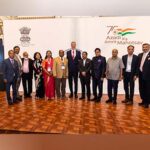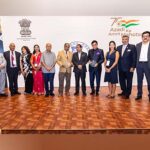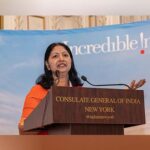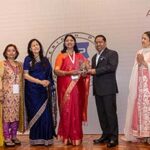By Chacko Zachariah,
(Mr. Chacko Zachariah is a Licensed Real Estate Broker and Realtor, Fabulous Homes, Inc., 954-491-7600, CZachariah2000@Yahoo.com)
Florida means “full of flowers”, and it was named in honor of Spain’s Easter celebration known as “Pascua Florida,” or “Feast of Flowers” by the Spanish conqueror and explorer, Juan Ponce de Leon. On April 2, 1513, during Easter week (Passion week), which in Spanish is “Pascua Florida” or “La Pascua de la Florida” (in English “Flowery Easter”; as Easter is celebrated in spring and flowers are in bloom), he discovered the Florida peninsula, claimed it for Spain and named it “La Florida”, even though various American Indian Tribes had been living here for centuries.
La Florida (Spanish Florida) included the present State of Florida plus large parts of several of the southeastern states of the United States and remained a Spanish Colony as part of the Captaincy General of Cuba under the Spanish Empire for a period of over 200 years. Spanish settlers started settling in La Florida, introduced Christianity to La Florida, converted some of the native Americans to Christianity, and thus Spain became the first country to establish Christianity in North America.
The city of Saint Augustine in northeast Florida was the capital of La Florida for over 200 years and is the oldest European settlement in North America. After the British and French colonization of America, Spain lost most of the northern parts of La Florida. Spain eventually sold what remained of La Florida to the United States, which later became its 27th State, the State of Florida, in 1845. Presently, Florida is referred to as the ‘Sunshine State’ for its year round sunshine, great weather, beautiful beaches, and landscape.
Florida is a peninsula surrounded on three sides by water – the Atlantic Ocean on the east, the Straits of Florida on the south, and the Gulf of Mexico on the west, with beautiful beaches all around the coast making it truly a paradise. Thus it is surrounded by beautiful beaches on three sides for you to enjoy. Additionally, there are numerous bodies of water in the interior, including several lakes, canals, bays, and rivers, and some of these canals and rivers connect to the Atlantic Ocean or the Gulf of Mexico at various inlets along the coasts.
This combination makes it a recreational paradise for Swimming, Boating, Yachting, Fishing, Vacationing, Relaxing, as well as for Sporting events and living here yearround. Its climate and beauty is akin to that of Kerala, except that Kerala has mountains while the only mountains you come across in Florida are a couple of ‘waste mountains’ created from waste dumps. (Kerala is India’s southwestern coastal state and is considered one of the most exotic places on earth. Kerala has Arabian Sea to its west, the Indian Ocean to its south, and mountains called the Western Ghats to its east.) Then there is the Everglades running along the middle of Southern Florida and ending at the Florida Bay. Everglades is a natural wetlands ecosystem which happens to be a very unique ecosystem in the world where numerous species of plants and animals have been coexisting in harmony for thousands of years.
Florida is indeed one of the most beautiful and exotic places that God created; it is a land of milk and honey.
Tax Benefits of Living, Working, Doing Business, and Owning Real Estate in Florida
Florida is the one of the very few states in USA that has NO State or Local Income Taxes. Further, with the new US Tax laws enacted in 2017, most people in the USA are encountering double taxation, while Florida is the one of the very few states in the USA where you can escape all or some of the double taxation and save money and thus avoid some of the adverse effects from the restrictions placed on the SALT (Sales And Local Tax) deduction. SALT tax includes the State and Local (City) Income Taxes, the Local Sales Taxes, and the Real Property Taxes. Thus, with these new restrictions placed on the SALT deduction, most people are now taxed TWICE on the same EARNED income. (The famous Boston Tea Party during our Independence struggle almost 250 years ago was on “Taxation Without Representation”.)
Further, Florida offers property owners several other great tax benefits through Homestead Exemptions, Portability Law Provisions, “Save Our Homes” Laws, etc., some of which are available only in Florida.
This has set off a migration to Florida of the well to do and the wealthy who are snatching up fabulous properties at bargain prices as they can now save large amounts in taxes since they don’t have to pay any state or local income taxes, obtain tax savings from Homestead Exemptions, Portability Law Provisions, “Save Our Homes” Laws, etc.
As you can see Florida is the only state in the USA that also offers that combination of beautiful beaches, coastlines, weather, and resort style living, while also offering all the amenities that you can think of as well as all these tax savings that you obtain from owning Florida Real Estate.
Florida’s Economy and its Real Estate
Along these coasts of Florida’s beautiful waterways line fabulous residential and commercial properties – spectacular homes, condominiums, apartments, hotels, restaurants, shopping centers, office buildings, mixed use properties, etc., and you will also find innumerable numbers of boats, yachts, and marinas lined up along the banks and coasts of these waterways. By night fall, several of these coastal areas light up like Paris, the city of lights.
Even though, tourism had been one of the main engines that drove Florida’s economy in the past, it is now very diversified with significant contributions from recreational and entertainment facilities, agriculture, farming, ranching, cruises, shipping, construction, banking and finance, world renowned education, healthcare, science, and research establishments, manufacturing, military bases, world renowned art, antique, auto, boat, design, and home shows, air and sea shows, conventions, and so forth.
Florida used to be just a seasonal tourist and retirement place, but that had been changing rapidly in the past four decades and is now an year-round destination. People have been migrating to Florida in large numbers for its beautiful beaches and weather, spectacular waterways, status as a “no state and local income tax” state, thriving year round trade and commerce, jobs, access to world class universities, colleges and healthcare facilities, the availability of spectacular residences, hotels, restaurants, existence of myriad of cultures and cuisines, access to travel to anywhere in the world by air, sea, and land.
Further, in the past three decades Florida has become the gateway to the Caribbean, Central America, and South America for banking, finance, trade, and other businesses. As a result, several US and European Companies have set up their Southern Headquarters in South Florida for conducting their businesses in various countries in the Caribbean, Central America, and South America. Further, many countries in the Caribbean, Central America, and South America have set up their Consulates in South Florida.
With the availability and accessibility to almost everything through the web for the past several years, people now live, work, and play here in Florida year round while conducting most businesses. This has accelerated the migration of the wealthy and the well to do to Florida. Florida’s population has now grown to over 22 Million
Cosmopolitan Character of Florida and its Influence on its Economy, Culture, and Vibrancy.
Florida has a very diverse population of people from all over the world. As stated above, Florida used to be a Spanish Colony. Several areas of Florida have become cosmopolitan as they have significant numbers of people from all over the world and from different backgrounds and cultures living in harmony and making it a better place to live. Of these areas, Southeast Florida is the most cosmopolitan.
Southeast Florida consists of the three major metropolitan areas of Miami, Fort Lauderdale, and Palm Beach, which are three adjacent coastal cities, with Fort Lauderdale sandwiched between Miami to the south and Palm Beach to its north.
Southeast Florida, is akin to the French Riviera, but it is a much better and cheaper place to live as you have access to all your needs year-round from world class facilities. Cost of living is much cheaper and prices for most things, especially Real Estate, is only a fraction of what you have to pay in other similar places around the world. In addition, you enjoy the safety, security, and stability of being part of the USA while living on a peninsula.
Southeast Florida is a multi-cultural melting pot made possible by a very diverse population coming together from various cultural and racial backgrounds and ethnicities from several parts of the world and making it their home while cultivating and enjoying different traditions, practices, ideas, beliefs, and religions, and speaking several languages. Sprinkled throughout the area are numerous restaurants and shops offering a myriad of cuisines and foods from various parts of the world, shops offering variety of arts and crafts, clothes and wares, as well as art galleries and museums showcasing art from around the world..
Throughout the year there are numerous lively multi-ethnic festivals, shows, celebrations, and parades, music and concerts all showing the vibrancy of the presence of different cultures from around the world which provide great vibrancy to the area while making Florida a great place to live, work, and play. You also get to enjoy great nightlife, watch amateur and professional sports, you name it, it is here. In a nut shell it is a vibrant cosmopolitan environment and region.
These show what a beautiful and vibrant place Florida is to live and work. Residential properties along Florida’s coastal regions sell for anywhere from the US $300,000s to 100 Million Dollars. Coming up in this series of articles we will elaborate on these and other topics in relation to real estate.
Next in Part II of this series on ”Florida and Florida Real Estate” will be a brief explanation of the Tax Savings and Benefits of owning Florida Real Estate: the SALT tax, Homestead Exemption, Portability Law Provisions, “Save Our Homes” Laws, and other Tax Benefits for owning Residential and Commercial Properties in Florida.
Chacko Zachariah, has been a Licensed Real Estate Broker and Realtor with Fabulous Homes, Inc., in Florida selling Luxury Homes, Condominiums, Commercial, and Industrial Properties for over the past 30 years. He can be reached at 954-491-7600 or CZachariah2000@Yahoo.com .















